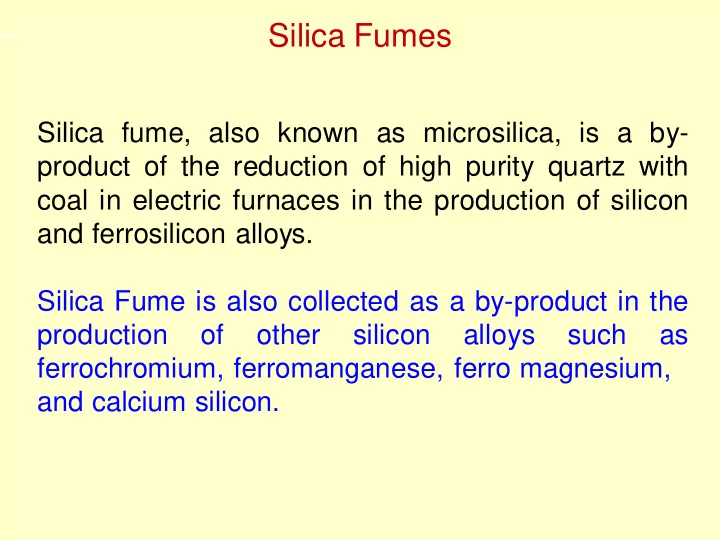

Silica Fumes Silica fume, also known as microsilica, is a by- product of the reduction of high purity quartz with coal in electric furnaces in the production of silicon and ferrosilicon alloys. Silica Fume is also collected as a by-product in the production of other silicon alloys such as ferrochromium, ferromanganese, ferro magnesium, and calcium silicon.
Need for recycling and reuse of Tires Threat to human health and the environment (poisonous gas production) Unsightly Land Pollution Collection of rainwater (Mosquito breeding) tire fires Recycling or Reuse Stockpiled or landfilled
Civil Engineering Applications of Scrap Tires Sub-grade Asphalt Rubber Road embankments Insulation for Roads Pavement
Pavement Requirements • Durability (Flexible/ Rigid) • Deformation/ Modulus • Thermal Resistance • Rutting Resistance • Wearing • Shrinkage Resistance • Skid Resistance Rubber Tire with Steel Mesh meets all above requirements
Splicing Prof. R C Joshi Univ. of Calgary, Canada of Side-walls Schematic diagram of spliced and flattened Tire
Longitudinal Direction of Pavement Width of Pavement
Beneficial Use of Glass Aggregates Growing plants without soil)
Application of Dredged Material www.deme.be/projects/malaysia_pulauindah.html http://www.deme.be/projects/maldive_hulhumale.html
Beneficial Use of Dredged Material • Beach nourishment • Shore protection • Soil creation/enhancement • Land reclamation • Habitat restoration • Construction materials
Characterization of waste 1. Water content 2. Density 3. Granulometry (fractions of gravel, sand, silt and clay) 4. The following constituents: a) Total organic carbon b) Carbonate content c) Mercury, arsenic, cadmium, copper, lead, zinc, chromium, nickel, iron, manganese. d) Organochlorines e) Total extractable hydrocarbons f) Tributyltin (TBT) and dibutyltin (DBT) g) Polycyclic aromatic hydrocarbons (PAH) h) Toxicity tests (Microtox or whole sediment bioassay) i) Thermal & Chemical stability
Characterization of waste Need for a complete Physico-chemico-Mineralogical Thermal & Electrical Characterization To understand their behavior and recommending a proper utilization scheme
Recommend
More recommend